Upside Down Eggplant Growing: Imagine plucking plump, juicy eggplants from hanging baskets right outside your kitchen door! Sounds like something out of a futuristic garden, doesn’t it? Well, it’s not science fiction; it’s the surprisingly simple and incredibly rewarding technique of upside down eggplant growing, and I’m here to show you how to do it!
While the exact origins of upside down gardening are a bit hazy, the concept of vertical gardening itself has roots stretching back centuries. Think of the Hanging Gardens of Babylon, one of the Seven Wonders of the Ancient World! While we’re not quite building ziggurats, we are taking inspiration from the idea of maximizing space and creating visually stunning displays of edible plants. This method is especially beneficial for those with limited garden space, like apartment dwellers with balconies or anyone looking to add a unique touch to their patio.
Why should you try this? Well, beyond the sheer novelty, upside down eggplant growing offers several practical advantages. It helps protect your precious eggplants from soil-borne pests and diseases, improves air circulation, and can even lead to earlier and more abundant harvests. Plus, let’s be honest, it’s just plain cool! In this article, I’ll guide you through every step, from choosing the right container to providing the perfect care, so you can enjoy a bountiful harvest of delicious eggplants hanging right at eye level. Get ready to impress your neighbors and enjoy fresh, homegrown goodness like never before!
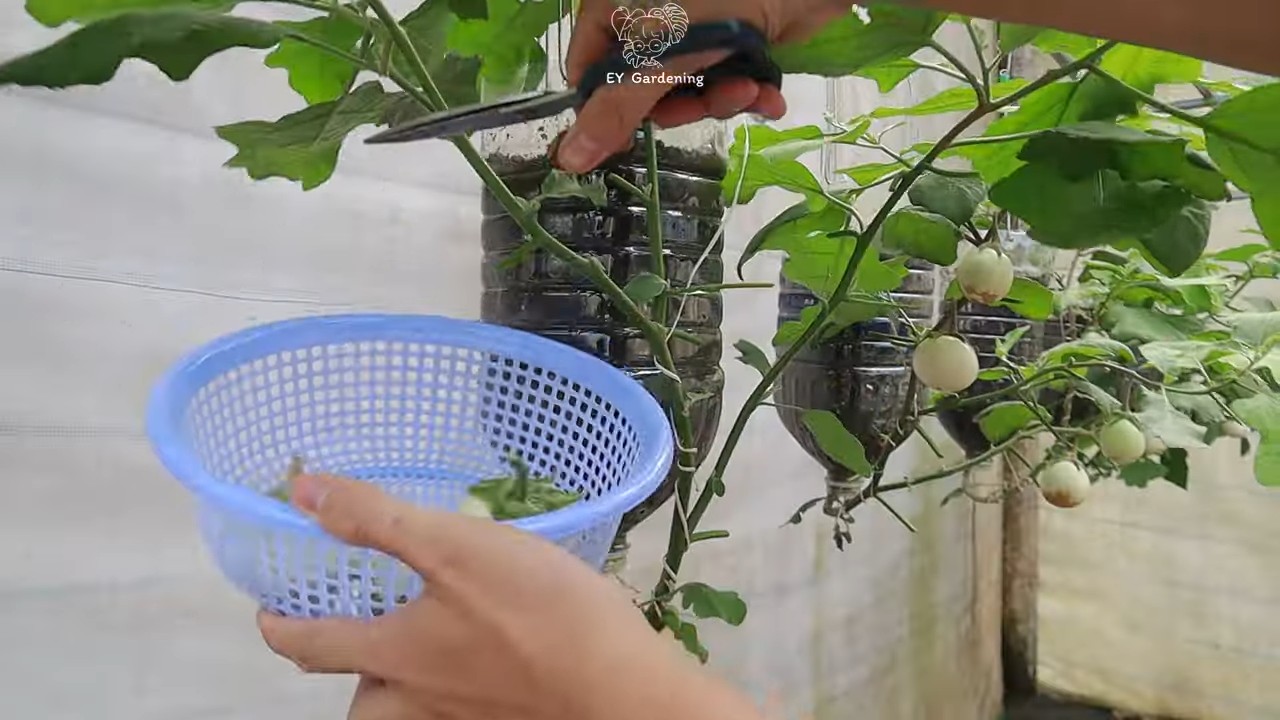
Growing Eggplant Upside Down: A Fun and Productive DIY Project
Hey there, fellow gardening enthusiasts! Ever thought about growing eggplant upside down? It’s a quirky, space-saving, and surprisingly effective way to cultivate these delicious veggies. I’ve been experimenting with this method for a few seasons now, and I’m excited to share my experience and guide you through the process. Trust me, it’s easier than you think, and the results are often fantastic!
Why Grow Eggplant Upside Down?
Before we dive into the how-to, let’s quickly touch on why you might want to try this method. Here are a few benefits I’ve noticed:
* Space Saving: Perfect for balconies, patios, or small gardens. You only need vertical space!
* Pest Control: The elevated position can deter some ground-dwelling pests.
* Improved Air Circulation: Less risk of fungal diseases due to better airflow around the plant.
* Easy Harvesting: No bending over! The eggplants hang right at eye level.
* Novelty Factor: Let’s be honest, it’s just plain cool!
What You’ll Need
Okay, let’s gather our supplies. Here’s what you’ll need to get started:
* Eggplant Seedling: Choose a healthy, compact seedling. Smaller varieties tend to do better upside down. I’ve had good luck with ‘Patio Baby’ and ‘Fairy Tale’ eggplants.
* 5-Gallon Bucket (or similar container): A sturdy plastic bucket with drainage holes is ideal. Make sure it’s clean!
* Potting Mix: Use a high-quality, well-draining potting mix. Avoid garden soil, as it can compact too much.
* Landscape Fabric or Burlap: This will help prevent the soil from falling out of the hole.
* Utility Knife or Drill: For creating the drainage and planting hole.
* Watering Can or Hose: For, well, watering!
* Fertilizer: A balanced, slow-release fertilizer is recommended.
* Gloves: To keep your hands clean.
* Eye Protection: When drilling or cutting the bucket.
* Strong Chain or Rope: For hanging the bucket securely.
* S-Hooks (optional): To make hanging the bucket easier.
Step-by-Step Instructions: Creating Your Upside-Down Eggplant Planter
Now for the fun part! Let’s build our upside-down eggplant planter.
1. Prepare the Bucket:
* First, clean your bucket thoroughly with soap and water. This is important to prevent any diseases from affecting your eggplant.
* Next, drill or cut several drainage holes in the bottom of the bucket. I usually go for about 5-6 holes, each about 1/2 inch in diameter. This ensures proper drainage and prevents waterlogging, which can be fatal to eggplant.
* Now, the crucial part: create the planting hole. In the center of the *bottom* of the bucket (which will be the top when it’s hanging), carefully cut a hole large enough to accommodate the eggplant seedling’s root ball. I usually aim for a 2-3 inch diameter hole. Be careful not to make it too large, or the soil will fall out easily.
* Smooth the edges of the hole to prevent any damage to the plant’s stem. You can use sandpaper or a file for this.
2. Line the Hole:
* Cut a piece of landscape fabric or burlap slightly larger than the planting hole.
* Carefully insert the fabric or burlap into the hole, creating a sort of “collar” that will help hold the soil in place. This is a crucial step to prevent soil from constantly falling out.
* Secure the fabric or burlap with a few small stitches or staples if needed.
3. Plant the Seedling:
* Gently remove the eggplant seedling from its container. Be careful not to damage the roots.
* Carefully feed the root ball through the planting hole from the inside of the bucket. This can be a bit tricky, so be patient.
* Position the seedling so that the stem is centered in the hole.
* Gently backfill the hole with potting mix, ensuring that the root ball is completely covered.
4. Fill the Bucket with Potting Mix:
* Now, fill the rest of the bucket with potting mix, leaving about an inch or two of space at the top.
* Gently pat down the soil to remove any air pockets.
* Mix in a slow-release fertilizer according to the package directions. This will provide your eggplant with the nutrients it needs to thrive.
5. Water Thoroughly:
* Water the eggplant thoroughly until water drains out of the drainage holes. This will help settle the soil and ensure that the roots are properly hydrated.
6. Hang the Bucket:
* Attach the chain or rope to the bucket handle. Make sure it’s securely fastened!
* Find a sturdy location to hang the bucket. A strong tree branch, a pergola, or a sturdy hook on a patio are all good options.
* Hang the bucket in a location that receives at least 6-8 hours of sunlight per day. Eggplants need plenty of sun to produce fruit.
* Ensure the hanging location can support the weight of the bucket, soil, and mature eggplant.
Caring for Your Upside-Down Eggplant
Okay, your eggplant is planted and hanging! Now, let’s talk about how to keep it happy and healthy.
1. Watering:
* Water your eggplant regularly, especially during hot, dry weather. Check the soil moisture by sticking your finger into the soil. If the top inch feels dry, it’s time to water.
* Water deeply, until water drains out of the drainage holes.
* Avoid overwatering, as this can lead to root rot.
2. Fertilizing:
* Eggplants are heavy feeders, so you’ll need to fertilize them regularly.
* Use a balanced, water-soluble fertilizer every 2-3 weeks.
* Follow the package directions carefully.
3. Pest Control:
* Keep an eye out for pests such as aphids, flea beetles, and spider mites.
* If you spot any pests, treat them promptly with an appropriate insecticide or insecticidal soap.
* You can also use organic pest control methods, such as neem oil or diatomaceous earth.
4. Pruning:
* Prune your eggplant regularly to encourage bushier growth and better fruit production.
* Remove any suckers (small shoots that grow from the base of the plant).
* Pinch off the tips of the branches to encourage branching.
5. Support:
* As the eggplants grow, they may become heavy and weigh down the plant.
* Provide support for the branches if needed. You can use twine or plant ties to support the branches.
6. Pollination:
* Eggplants are self-pollinating, but they may benefit from hand-pollination, especially in hot weather.
* To hand-pollinate, gently shake the plant or use a small paintbrush to transfer pollen from one flower to another.
Troubleshooting
Even with the best care, you might encounter a few challenges. Here are some common problems and how to address them:
* Yellowing Leaves: This could be a sign of overwatering, underwatering, or nutrient deficiency. Check the soil moisture and fertilize if needed.
* Blossom Drop: This is when the flowers fall off before producing fruit. It can be caused by hot weather, lack of pollination, or stress. Ensure adequate watering and consider hand-pollination.
* Pest Infestations: As mentioned earlier, keep an eye out for pests and treat them promptly.
* Slow Growth: This could be due to lack of sunlight, poor soil, or nutrient deficiency. Ensure your eggplant is getting enough sunlight and fertilize regularly.
Harvesting Your Eggplant
The moment you’ve been waiting for! Here’s how to harvest your upside-down eggplants:
* Harvest your eggplants when they are firm, glossy, and have reached the desired size.
* Use a sharp knife or pruning shears to cut the eggplant from the plant.
* Leave a small stem attached to the eggplant.
* Harvest regularly to encourage continued fruit production.
Choosing the Right Eggplant Variety
Not all eggplant varieties are created equal when it comes to upside-down growing. I’ve found that smaller, more compact varieties tend to perform best. Here are a few of my favorites:
* ‘Patio Baby’: This variety produces small, bite
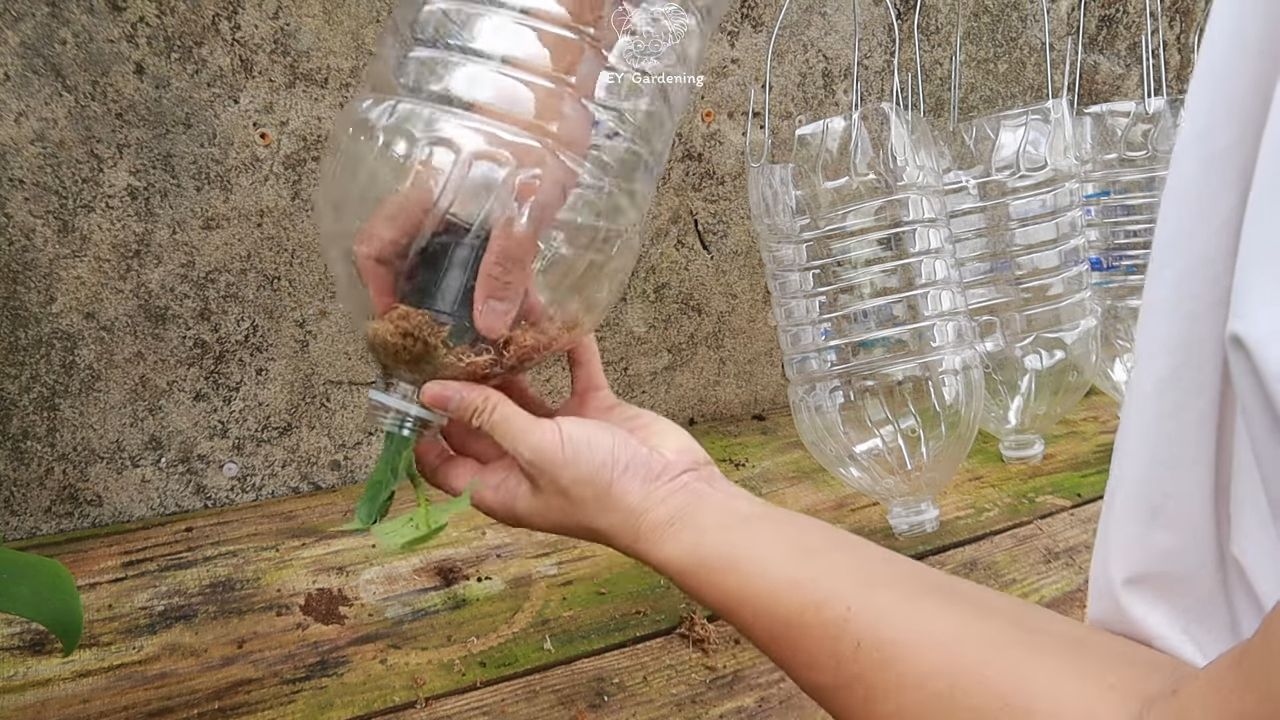
Conclusion
So, there you have it! Growing eggplant upside down isn’t just a quirky gardening trend; it’s a genuinely effective method for producing healthier, more abundant yields, especially when space is at a premium. We’ve explored the numerous benefits, from improved air circulation and reduced pest problems to the sheer convenience of harvesting your delicious, homegrown eggplant.
This DIY trick is a must-try for any gardener, whether you’re a seasoned pro or just starting out. The simplicity of the setup, combined with the potential for impressive results, makes it an incredibly rewarding project. Imagine the satisfaction of plucking perfectly formed eggplants from your hanging baskets, knowing you’ve bypassed common gardening challenges and maximized your harvest.
But the beauty of this method lies in its adaptability. Feel free to experiment with different container sizes and materials. While we’ve focused on using buckets, you could also repurpose hanging baskets or even create your own custom containers. Consider adding companion plants like marigolds or basil to your upside-down eggplant planters to further deter pests and enhance the flavor of your eggplants. You can also try different varieties of eggplant. While smaller varieties like Fairy Tale or Patio Baby are particularly well-suited for upside-down growing, you can certainly experiment with larger varieties, just be sure to provide adequate support as the plant matures and the fruits develop.
Don’t be afraid to get creative with your setup. Maybe you want to build a dedicated hanging structure, or perhaps you’ll simply suspend your planters from existing hooks or beams. The possibilities are endless! The key is to ensure that your plants receive plenty of sunlight, consistent watering, and proper fertilization.
We are confident that once you experience the ease and effectiveness of growing eggplant upside down, you’ll be hooked. It’s a fantastic way to enjoy fresh, homegrown produce, even if you have limited space. Plus, it’s a conversation starter! Your neighbors will be amazed by your innovative gardening techniques.
So, what are you waiting for? Gather your supplies, follow our simple steps, and embark on your upside-down eggplant growing adventure today! We’re eager to hear about your experiences. Share your photos, tips, and successes with us in the comments below. Let’s create a community of upside-down eggplant enthusiasts and inspire others to try this amazing gardening technique. We believe that with a little effort and creativity, anyone can enjoy the benefits of this unique and rewarding method. Happy gardening! Let us know how your **upside down eggplant growing** goes!
Frequently Asked Questions (FAQ)
Q: What are the best eggplant varieties for upside-down growing?
A: While you can technically grow any eggplant variety upside down, smaller, more compact varieties tend to perform best. This is because they are less likely to become top-heavy and require excessive support. Excellent choices include Fairy Tale, Patio Baby, Hansel, and Gretel. These varieties produce smaller fruits and are naturally more manageable in a hanging container. However, if you’re determined to grow larger varieties like Black Beauty, be sure to provide ample support to prevent the plant from breaking or tipping over. You might need to use stakes or additional ties to secure the plant as it grows.
Q: How often should I water my upside-down eggplant?
A: Watering frequency depends on several factors, including the size of your container, the weather conditions, and the type of potting mix you’re using. As a general rule, check the soil moisture daily. If the top inch of soil feels dry to the touch, it’s time to water. Water thoroughly until excess water drains from the bottom of the container. During hot, sunny weather, you may need to water your eggplant daily, or even twice a day. Be careful not to overwater, as this can lead to root rot. Ensure your container has adequate drainage holes to prevent waterlogging.
Q: What kind of potting mix should I use?
A: Use a high-quality, well-draining potting mix specifically formulated for containers. Avoid using garden soil, as it can become compacted and impede drainage. A good potting mix will retain moisture while still allowing for adequate aeration. You can also amend your potting mix with compost or other organic matter to improve its fertility and drainage. Consider adding a slow-release fertilizer to the potting mix at planting time to provide your eggplant with a steady supply of nutrients.
Q: How much sunlight does my upside-down eggplant need?
A: Eggplants are sun-loving plants and require at least 6-8 hours of direct sunlight per day to thrive. Choose a location for your hanging container that receives plenty of sunlight throughout the day. If you live in a particularly hot climate, you may need to provide some afternoon shade to prevent the plants from overheating. If you don’t have a sunny spot outdoors, you can also grow eggplant indoors under grow lights.
Q: How do I fertilize my upside-down eggplant?
A: Eggplants are heavy feeders and require regular fertilization to produce abundant fruit. Start by incorporating a slow-release fertilizer into your potting mix at planting time. Then, supplement with a liquid fertilizer every 2-3 weeks throughout the growing season. Choose a fertilizer that is specifically formulated for vegetables and follow the instructions on the label. You can also use organic fertilizers like compost tea or fish emulsion. Be careful not to over-fertilize, as this can lead to excessive foliage growth and reduced fruit production.
Q: How do I prevent pests and diseases?
A: Growing eggplant upside down can help reduce pest and disease problems by improving air circulation and preventing soil-borne diseases. However, it’s still important to monitor your plants regularly for signs of pests or diseases. Common eggplant pests include aphids, flea beetles, and spider mites. You can control these pests with insecticidal soap, neem oil, or by handpicking them off the plants. Common eggplant diseases include fungal diseases like powdery mildew and blight. Prevent these diseases by providing good air circulation, avoiding overhead watering, and applying a fungicide if necessary. Companion planting with marigolds or basil can also help deter pests.
Q: How do I harvest my eggplants?
A: Eggplants are typically ready to harvest when they are firm, glossy, and have reached their mature size and color. The skin should be smooth and unblemished. Use a sharp knife or pruning shears to cut the eggplant from the plant, leaving a short stem attached. Harvest eggplants regularly to encourage continued production. Overripe eggplants will become bitter and seedy.
Q: Can I grow other vegetables upside down?
A: Yes, you can grow many other vegetables upside down, including tomatoes, peppers, cucumbers, and strawberries. The same principles apply: choose a suitable container, use a well-draining potting mix, provide plenty of sunlight, and water and fertilize regularly. Experiment with different vegetables to see what works best for you and your growing conditions.
Q: What if my upside-down eggplant plant starts to droop?
A: Drooping can be caused by several factors, including underwatering, overwatering, heat stress, or pest infestation. Check the soil moisture to determine if the plant needs water. If the soil is dry, water thoroughly. If the soil is waterlogged, allow it to dry out before watering again. If the plant is exposed to excessive heat, provide some afternoon shade. Inspect the plant for signs of pests or diseases and take appropriate action. If the drooping persists, consider transplanting the plant into a larger container or adding some support to the stem.

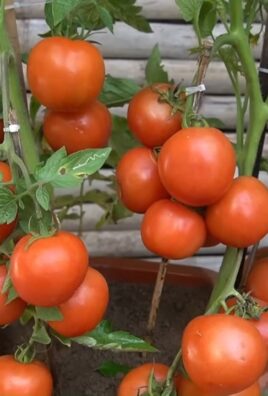
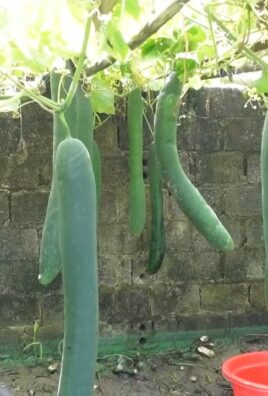
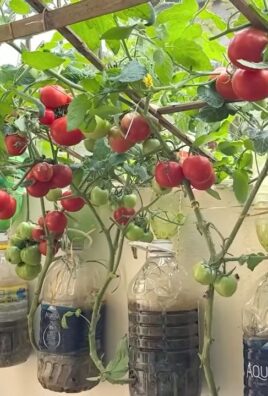
Leave a Comment